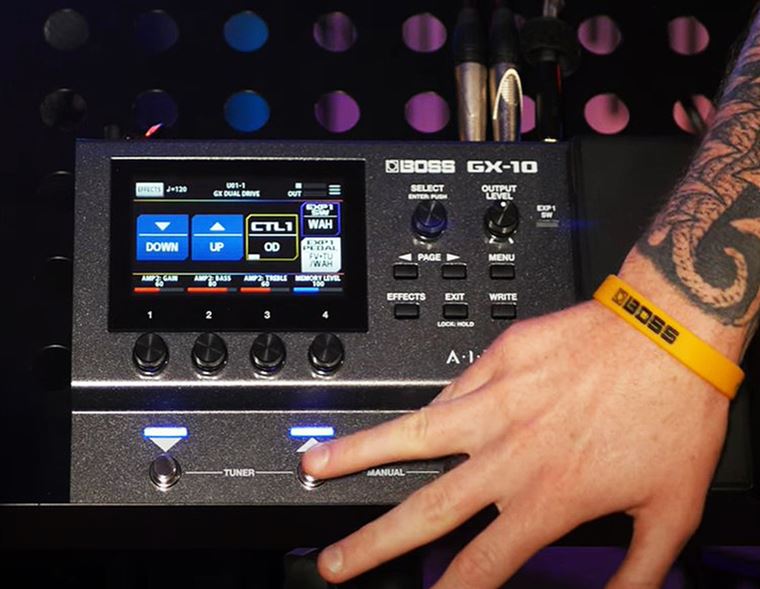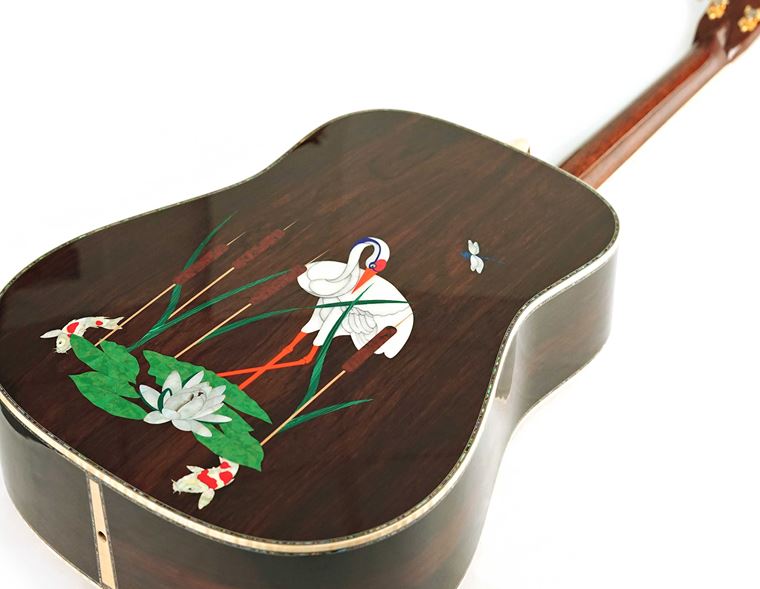Furch Guitars: An Introduction
Published on 30 September 2022
It’s a constant search for new and exciting guitar brands, here at guitarguitar. We’re always on the lookout! It’s one thing to be able to bring our fellow players and guitar fanatics world famous household name brands like Martin, Gibson and Fender. It’s quite another to find less well-known but equally high quality brands from outside the mainstream.
One brand that recently got us excited was the Czech company Furch. They’ve been making instruments since 1981, and have attracted the eyes and ears of big name players such as Al de Meola and Suzanne Vega. Those names were assurance enough, but we also just kept hearing great things about them, and being the intrepid guitar-seekers that we are, we were determined to find out more…
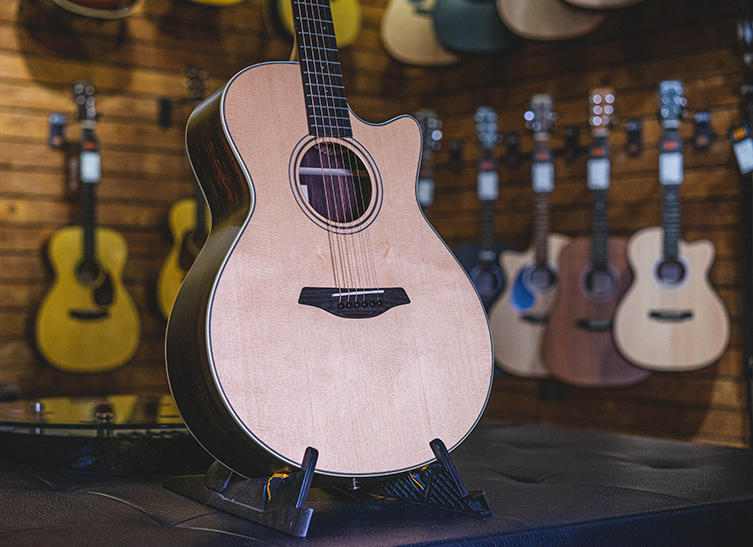
The Backstory
Furch’s story begins with the company’s founder and namesake, Frantisek Furch. Raised during the Communist period in the Czech Republic's history, Furch - a metalworker by trade - played in the underground Bluegrass scene of late 70s. He also built instruments for himself and friends, but had to do this secretly, since it wasn’t allowed under the country’s political regime. After the Velvet Revolution, which brought about the end of Communism in what was then Czechoslovakia, Furch was able to legitimately start building guitars for sale. Furch guitars began in 1981, in an abandoned flour mill in Velké Nemcice, where he also designed his own tools and jigs. Some man! To call Furch guitars a triumph of indomitable spirit is quite the understatement.
Furch Today
Since those early days, the brand has grown quite considerably, and is a major European builder with worldwide distribution. Nowadays, Frantisek’s son Petr has succeeded him as the company CEO. Adopting a ‘best practice for best result’ attitude, Furch use a combination of CNC machines, robots and human hand work to ensure they deliver the best sounding, best looking and best playing instruments possible. Like other top brands such as Taylor, Furch use humans where humans work best, and employ robotics and computers in the areas where minute precision can mean the difference between a good guitar and a great one.
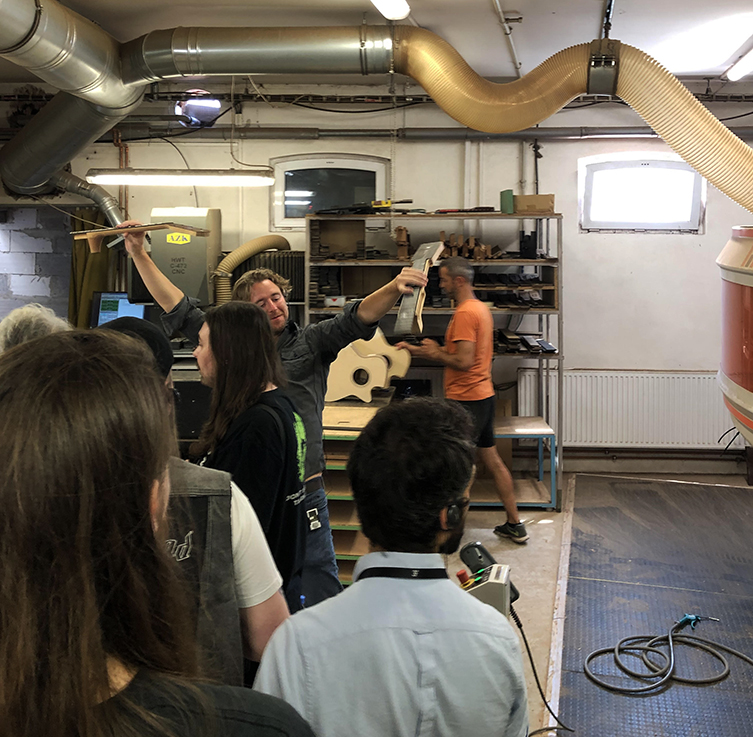
The Furch Difference
It’s not just a fascinating origin story that makes Furch such an interesting brand, it’s their innovations. Whilst smartly opting to use universally loved body shapes such as the dreadnought, the grand auditorium and the orchestral model, Furch have developed their own unique ways of creating necks, bracing and finishing for their guitars. Let’s take a quick look at these areas…

CNR - Composite Neck Reinforcement
Furch’s Composite Neck Reinforcement is a relatively revolutionary neck design, designed for increased stability and exceptional levels of adjustment. The truss rod itself is covered by a carbon casing to keep the neck in its best position whilst still facilitating the necessary graduated bow. The stability offered allows the guitar to be consistent, and the stability ensures a high level of playability. There’s also an aluminium alloy casting built in where it won’t affect any resonance, whilst still offering huge adjustability. All Furch guitars have this feature! The CNR means that less traditional reinforcement components are required in the build, so the top can resonate more freely. This of course means a better tone, so it’s a win all round.
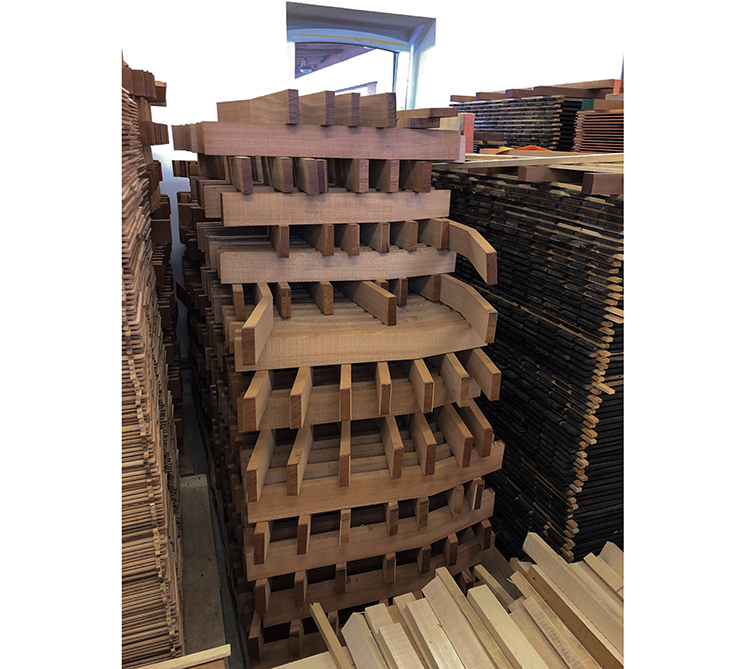
The Bracing
Bracing is another area that Furch pay close attention to, as part of a holistic attitude to guitar building. After all, each element plays a part and therefore every area must be given appropriate attention. As Furch themselves say:
“The soundboard design and the bracing pattern are fundamentally important for the sound and durability of a guitar. Because of that, our research and production teams pay ongoing attention to these elements of the guitar’s construction with the aim of bringing continual improvements. During more than 30 years of research and development, we have engineered a perfect blend of volume, dynamics, tonal balance, and rigidity, which is achieved by meticulous selection of tonewoods and application of an innovative soundboard voicing process to all our instruments. The result is an unmatched sound quality across the entire range of Furch guitars.”
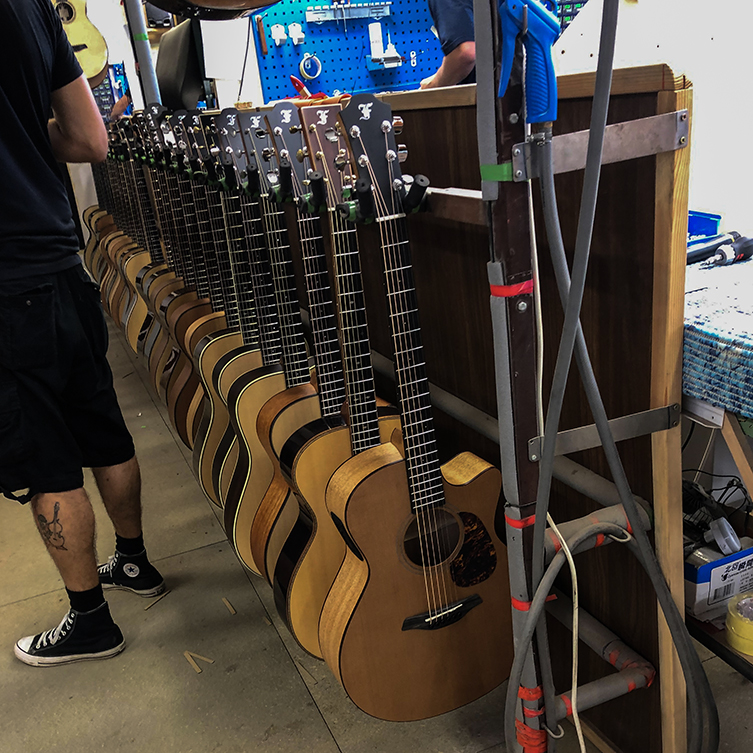
Unique Finishing
Another interesting innovation is in the finishes Furch use on all of their instruments. There are three distinct varieties, all of which are based on their own proprietary lacquer. From Furch themselves:
“Furch guitars feature several types of finishes. Although the primary purpose is to protect the instrument and to enhance appearance, the finish has a considerable effect on the resonance properties of wood, and it can improve tonal quality. With that in mind, we continue to perfect our finishes by developing proprietary technologies that allow reducing thickness while increasing resistance to mechanical damage”
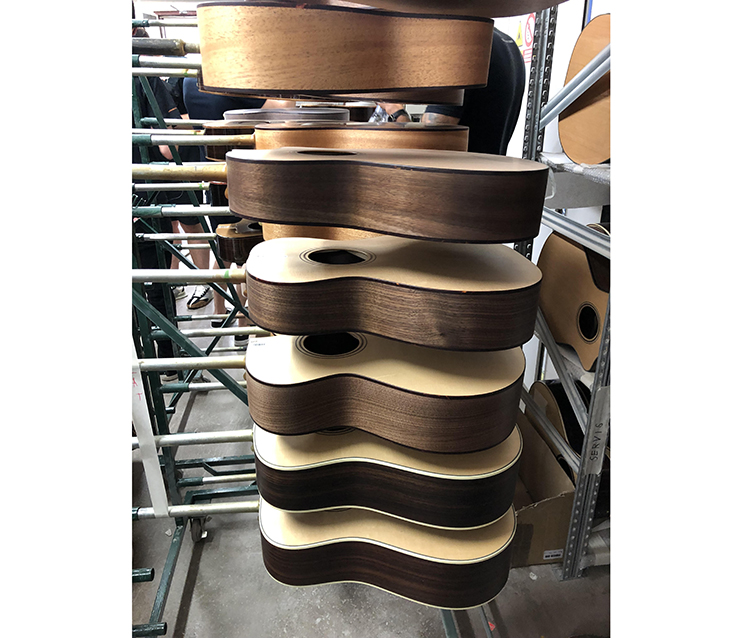
The lacquer itself took a year to invent and is around half as thick as typical solvent lacquers. Furch use UV light to cure the lacquer, which is not only very sci-fi, but dramatically cuts down the time required to complete the process.
The three finishes include Open-Pore, which is available on the most affordable Furch models; Full-Pore Vintage, which is satin, and Full-Pore High-Gloss, which is available on the higher end models.
The Guitars
Furch are an interesting, innovative brand alright, but what are there guitars like? Well, let’s look at one or two!
The models are organised into ranges named after colours of the rainbow. Each colour range contains a variety of body shapes and wood choices, so the difference is more down to timber quality, finishing and features. The range begins with Violet, which you can think of as their ‘standard’ range, and then ascends through Blue, Green, Yellow, Orange and finally Red sections.
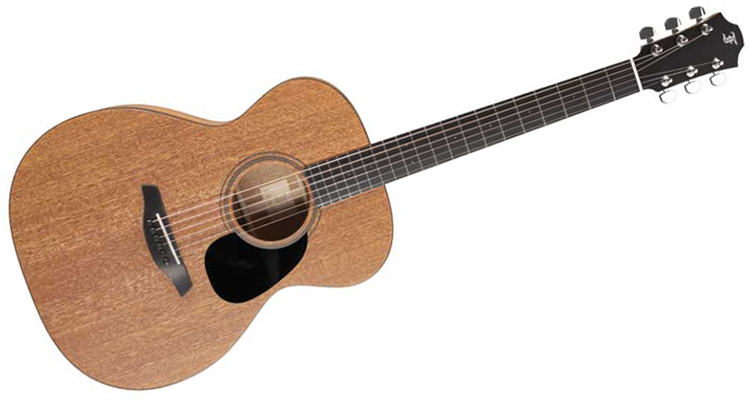
All Furch guitars are created with solid timber for the entire build, which is obviously a significant factor. The guitars start off sounding excellent but then only get better the more they are played in and seasoned. The wood goes through an intense drying and humidifying process to ensure quality and stability. This process is repeated a number of times before the build begins. Here are two examples that we have in stock just now…
Furch Violet D-SM
Our first choice is what many would regard as a starting point for assessing any brand. As the tikka masala is to the curry menu, so is the dreadnought to the acoustic guitar. It’s the one shape that everybody knows and that almost every guitar brand builds, so it’s handy for comparisons.
This particular Furch is the D-SM and is from the Violet range. The Violet range, as we mentioned earlier, is the most affordable Furch range and is more or less considered to be their ‘standard’ line of guitars.
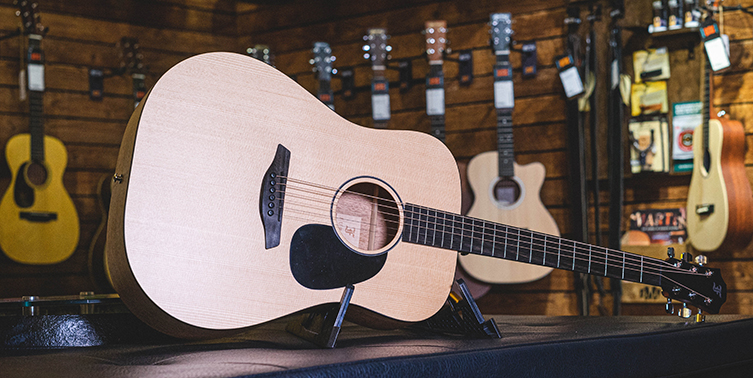
So what are we getting here? The Furch Violet D-SM is an all-solid build, with the CNR neck developments, and the open pore finish. The open pore nature of the finish has been developed to protect the instrument while still allowing the timber to breathe, as it were. Again, more movement in this regard means more resonance and therefore a deeper, better tone.
This all-solid guitar is made using Sitka spruce for the top, and African mahogany for the back and sides. This wood combo produces a good balanced sound, with the strident brightness of the spruce counterbalanced with the strong mids of the mahogany. Dreadnoughts are great strumming guitars and this wood combo promotes this well, with punchy, percussive qualities in evidence when blasting through a few well-loved favourites from our repertoire.
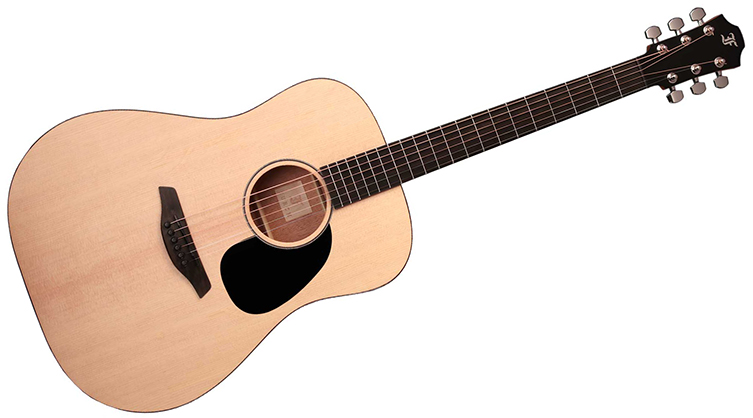
This is a guitar that can tackle all styles, delivering a fantastic playing experience and a complex, satisfying tone.
Furch Orange OMc-SR Master’s Choice
This beautiful guitar is a great example of Furch more high-end instruments. This Furch is an Orchestral model, so it’s a little smaller and narrower than a typical dreadnought. As part of the Orange Series, this OMc-SR is made with some of the finest timbers around. AAA Sitka spruce meets AAA Indian rosewood to make one of the finest marriages of woods in existence! Spruce and rosewood is a famous combo because they are hugely complimentary in terms of their resonant tones, and the triple-A quality here just excels that fact. Those are the timbers doing the heavy lifting here for sure, but there's more. The neck is built using African mahogany, and the decorative elements include red heart for the rosette and purfling, maple of the binding and ebony for the bridge, fingerboard and headstock face. Talk about quality!
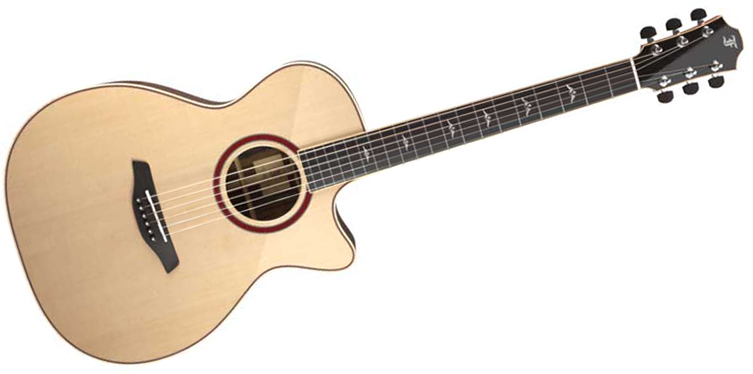
It’s all solid, of course, and the innovative CNR neck tech is here, as is the finely tuned bracing. This model features a soft V neck carve, and is fitted with top quality hardware from LR Baggs and Gotoh. This particular guitar is denoted ‘Master’s Choice’ because it’s the highest spec in its particular (in this case, Orange) range.
Furch Guitars: Available Now
For us, getting Furch into our stores was a no-brainer. They offer a great spec for the money, they are different to what's already available on the market, they are cleverly designed for stability and longevity and there are a lot of options available from the multitude of colour-coded lines within the range. The company’s backstory is inspiring and their ongoing commitment to local staffing, sustainability and also producing innovative, great sounding guitars all adds up to being something we really believe in. We invite you to try a Furch guitar or two upon your next visit to guitarguitar. Let us know what you think!

Click to View our Selection of Furch Guitars



